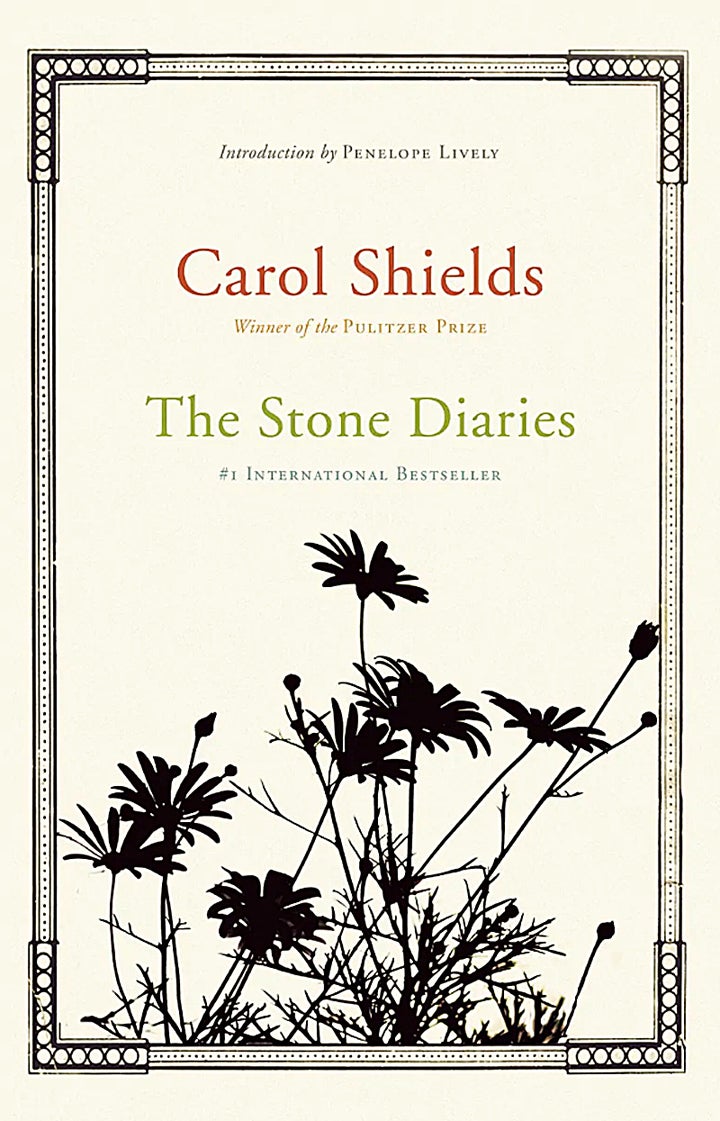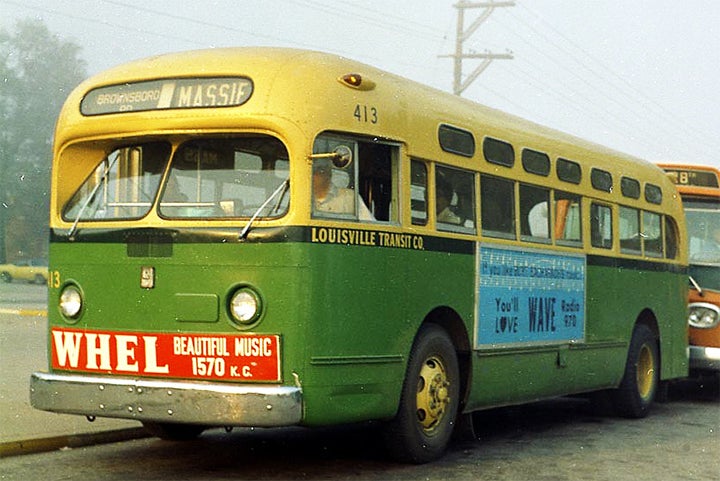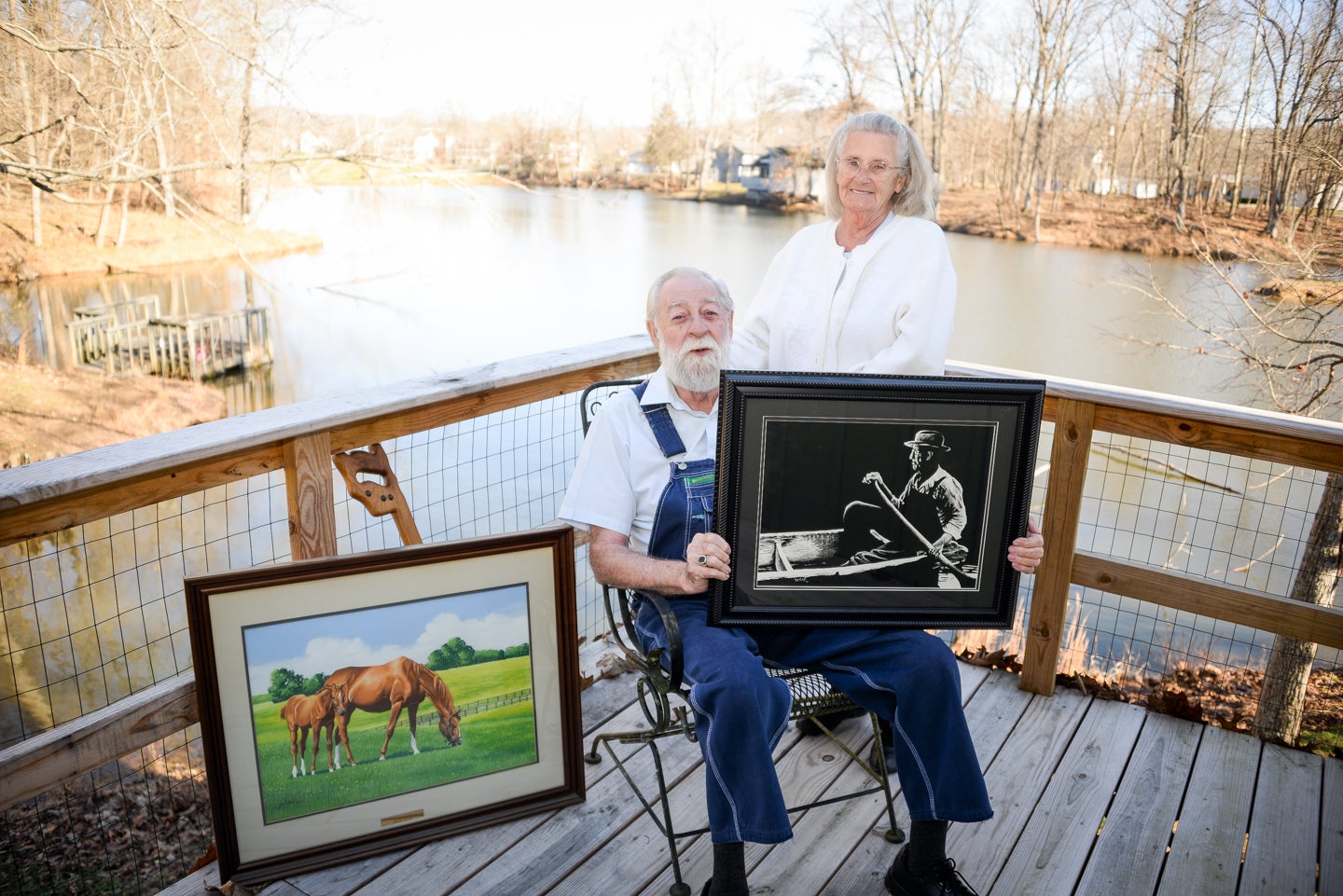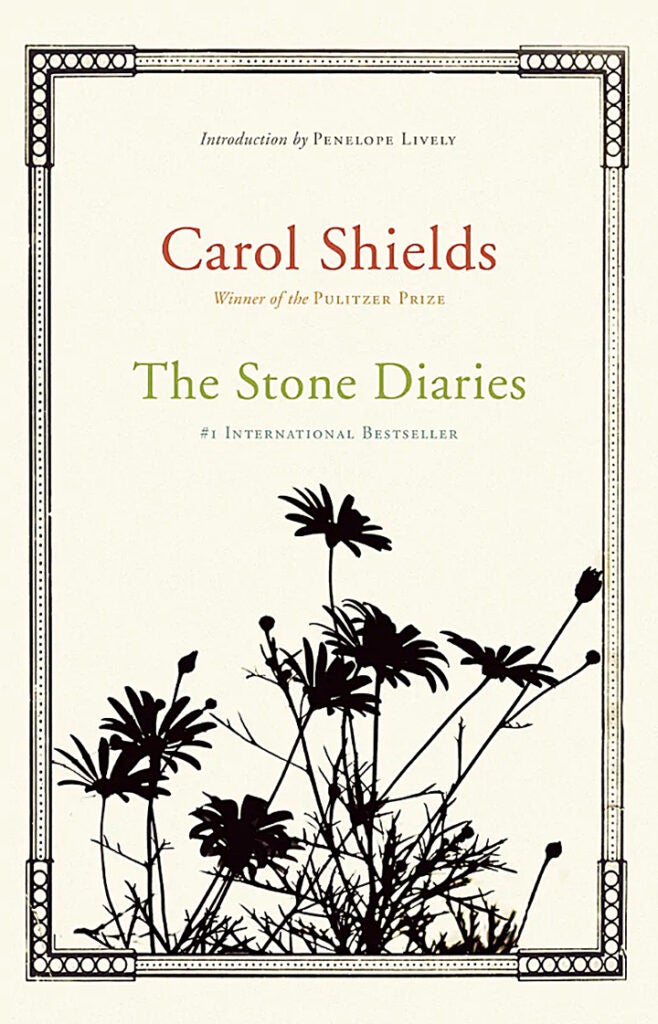
“The Stone Diaries” by Carol Shields
It’s impossible to tell how someone’s life will begin or end, and with this novel Carol Shields traces the path of one woman’s life through all of its bends and turns. This book is a character study in length and the author has a tremendous gift of knitting together a story from many pieces of cloth.
We start with the parents of Daisy, the novel’s subject, in Canada at the beginning of the 20th century. From her tragic birth, we follow along as she becomes a wife and mother, all the time discovering glimpses of her from various points of view as she traverses her path. The narration switches between viewpoints and perspectives such as letters from acquaintances, phone calls between relatives, and more. While this may seem as if it could be jarring and difficult to observe, Carol Shields writes with a master’s touch and these changes flow effortlessly through the narrative.
My favorite part of the novel is actually a series of letters that span the length of about a decade, seemingly innocuous in their presentation, but effortlessly providing clues to the events of the time. The author impressed me with the ability to say so much without really saying much at all.
I will say that, for better or worse, the novel tends to focus on the tragedies that occur to Daisy through her life. I think this was a deliberate choice, and when we do look back over the time that one spent on Earth, we focus on these things in our attempt to learn about a person.
One of the strongest aspects of the novel is the range of memorable supporting characters who help to fill in details about the protagonist. We have her father, a simple man who goes on to larger things, her girlfriends, who remain connected throughout their lives, her children, who provide us with who Daisy was as a mother, and many others that, while not strictly important to Daisy’s life, still provide us with pictures we wouldn’t otherwise see.
Rather than straightforward exposition, we find ourselves grasping who Daisy is through the ephemera of her life. In fact, I believe Shields is asking us to think about what truly makes up a person’s life, and whether you can truly know a person from just casual glances through a window.
The winner of the Pulitzer Prize for fiction in 1995, this book is great for someone who likes characters over plot and even includes a bit of historical fiction.
— Review by Ernie Dixon, Web Technologies Librarian, Paul Sawyier Public Library

“Redhead by the side of the Road” by Anne Tyler
Tyler has an ability to take ordinary life events and combine them with relatable characters to create wonderfully written stories that readers can relate to. In this novel, she presents her characters just as they are — ordinary people going about their day.
Micah Mortimer, a middle-aged, self-employed tech expert, lives his life simply, following carefully planned routines daily. To say that Micah is a creature of habit is an understatement. But one day, two things happen that upset his routine — his “woman friend” Cass tells him that she is on the verge of losing her apartment, and later, the teenage son of an ex-lover shows up claiming to be his son.
While the gist of this story is concerned with resolving both of these storylines, Tyler effortlessly fills in the book with other details including all the customers Micah deals with and several tenants in the apartment building where he lives. Tyler also presents a delightful scene in which we meet Micah’s immediate family, helping us understand how and why he turned out the way he is.
The humor in this novel is subtle and occurs so naturally that you find yourself laughing out loud. A simple story, but one with substance and heart — a perfect choice during this challenging time.
— Review by Paul Sawyier Public Library staff
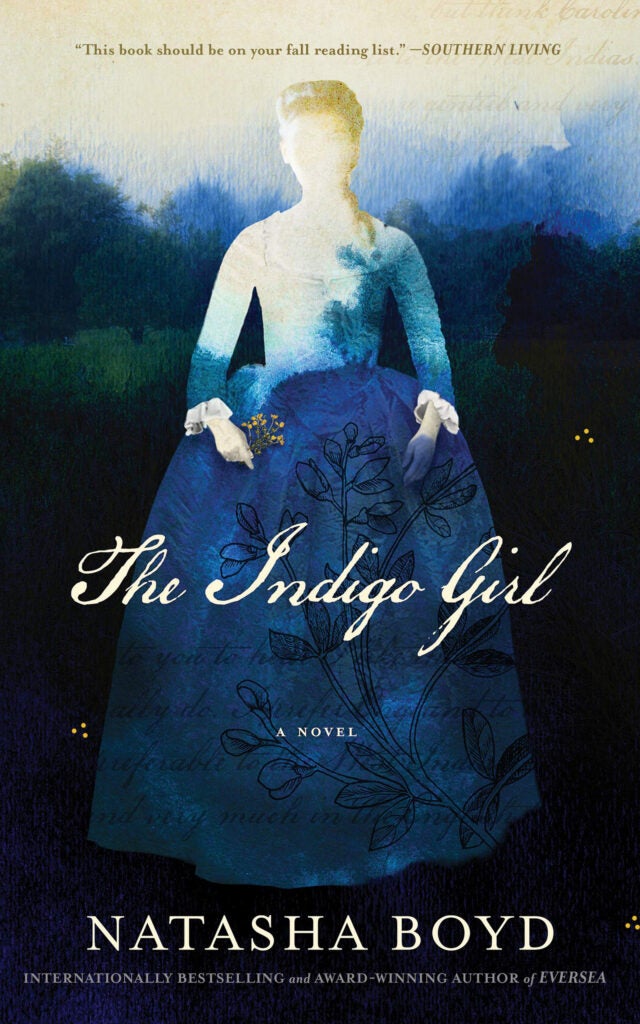
“The Indigo Girl: A Novel” by Natasha Boyd
In 2013, Natasha Boyd attended an indigo exhibit on Hilton Head Island. There were artisans of many types inspired by the blue dye, but there was also a costumed character, Eliza Lucas Pinckney, who wandered through the exhibits. Boyd overheard a conversation about a 16-year-old girl who ran her father’s plantations while he was abroad. “This girl made a deal with her slaves: she would teach them to read, and in return they would teach her the secrets of making indigo.” After further research, Boyd was compelled to tell the story of the “Indigo Girl.”
The year is 1739, and 16-year-old Eliza Lucas has just moved from the West Indies to Charles Town, Carolina. Her father has procured several plantations, but England declared war on Spain, and he has hopes of a major commission for service in the war. He decides that with the help of the overseers, and the sound advice of Charles Pinckney from town, Eliza can run the business. Eliza’s mother has complained since arriving in Carolina of her failing health. She resents being abandoned by her husband, and thinks Eliza should be shopping for an eligible suitor instead of pursuing botany and providing for the slaves on their plantations.
But Eliza dreams of indigo as the cash crop that will save the day, and allow her the freedom to make her own choices. Local growers say that they’ve tried to plant it, but without any success. Eliza notices that several slaves wear the blue fabric. She makes a deal with her slaves to provide better living conditions including teaching them to read the Bible. Charles Pinckney advises her that so long as she follows the letter of the law, and doesn’t teach the slaves how to write messages, that she will not break any laws.
Cooperation from the slaves turns into the easiest obstacle to overcome. She asks her father to send an advisor from East who seems determined to sabotage Eliza’s efforts. There are the scattered slave rebellions in the Carolinas, plus the vindictive town folk who have heard of Eliza’s compassionate treatment of the slaves. Weather and pests become an issue.
This was an enlightening historic fiction title set in one of my favorite cities to explore, and included characters whose estates still exist as museums. If you enjoy reading about strong women, “The Indigo Girl” should be your next read!
— Review by Lizz Taylor, Poor Richard’s Books
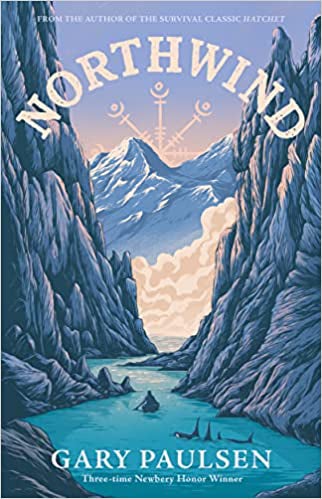
“Northwind” by Gary Paulsen
Many years ago when I was returning from a vacation in the south with my family, being the driver, I wanted to listen to a book to keep alert. But, I had two young boys in the vehicle that I knew would not be attentive to a “mom” book.
But, I had an audio copy of Gary Paulsen’s “Hatchet.” Thirteen-year-old Brian is on the way to visit his father when the single-engine plane he is flying crash lands in the Canadian wilderness. Brian has only his torn windbreaker and a hatchet his mother gave him for his birthday for survival tools. As our trip home to Frankfort was nearly completed, but the book had not finished, my sons asked me to drive around for a while so they could finish listening to Brian’s story.
At the request of so many of Paulsen’s fans, he wrote a follow-up story about Brian. He begins with Brian’s friends not believing his “Hatchet” story, so he sets out to recreate the experience in “The River.” Of course, my boys read that immediately.
Paulsen recently died, but it was announced that he had completed one last survival adventure tale. Set in a time past, and in the rugged North Pacific coast area, this is the journey of an orphan boy’s battle to stay alive after a deadly plague creeps into his village from a foreign ship. Twelve-year-old, Leif is instructed to take a canoe, head north, and not return.
As in “Hatchet,” Paulsen uses his knowledge of the wilderness to describe Lief’s subsistence and navigation in the hazards of bears, whales and tidal whirlpools. His diet is mainly blackberries and salmon, but he becomes aware of “the rhythms of this place and all places that will come to me.” Lief becomes his truest self as he connects to the “heartbeat of the ocean … the pulse of the sea.”
This journey was inspired by the adventures in Paulsen’s youth, and all ages can feel the tension and joys that define his characters.
Paulsen wrote more than 200 books both for adults and children. Three of his novels were selected as Newberry Honor books.
— Review by Lizz Taylor, Poor Richard’s Books

